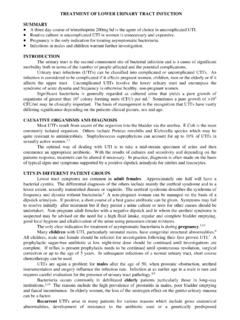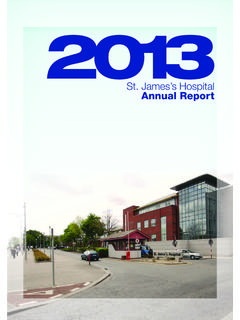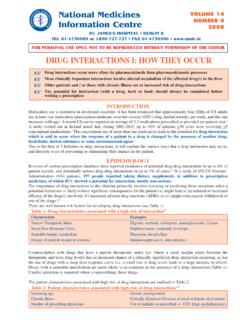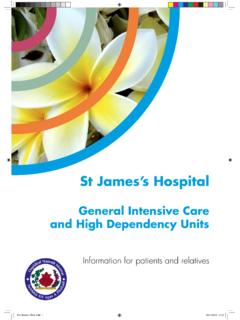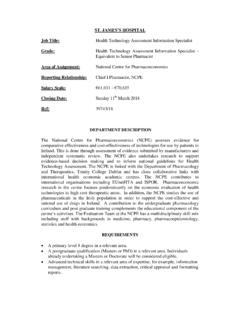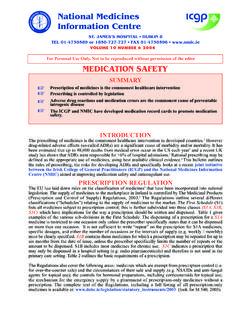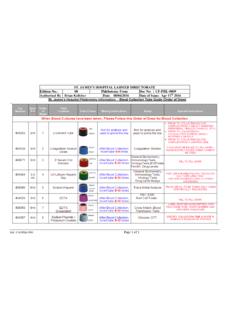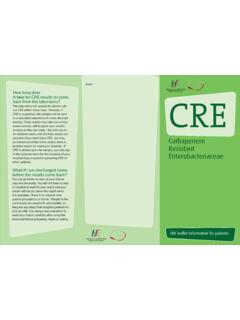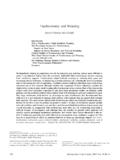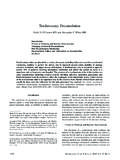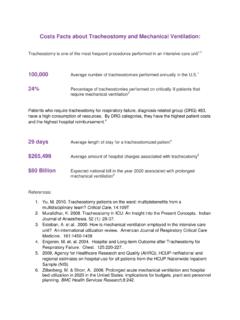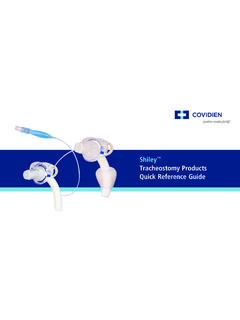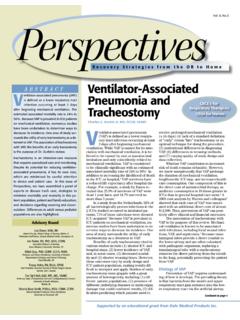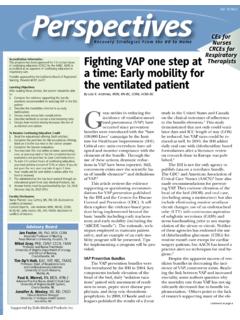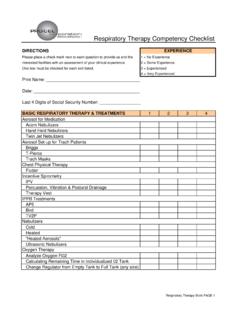Transcription of Tracheostomy Guidelines 2013 - St. James's Hospital
1 Page 1 of 58 Tracheostomy Care Guidelines No: SJH:N(G):009 Version 4 St. James s Hospital Nursing Tracheostomy Care Guidelines Guidelines Number: SJH:N(G):009 Owner: Tracheostomy Safety Facilitator: Ms. J. Norton Tracheostomy Care Working Group Approved by: Director of Nursing: Mr. P. Gallagher Effective from: January 2000 Revised: December 2013 Revision Due: December 2015 Reviewed by: Consultant Otolaryngologist, Prof. C. Timon Consultant Otolaryngologist, Mr J. Kinsella, Consultant Oral Maxillofacial Surgeon: Prof.
2 L Stassen Consultant Anaesthetist, Dr C. Fagan, Consultant Anaesthetist, Dr J. Moriarty, Nursing Practice Development Unit: Ms. M. Roche Resuscitation Officer: Ms. A. Brady, Document History: Version 4 - December 2013 These Guidelines replace all existing policies from December 2013 onwards and are due for review August 2015. They will be reviewed during this time as necessary to reflect any changes in best practice, law and /or substantial organisational, professional or academic change. Distributed to: Nurse Managers in all Clinical Areas; Nursing Practice Development; Centre for Learning & Development Posted SJH Intranet: Introduction A Tracheostomy a surgical opening or stoma into the trachea below the larynx is undertaken either electively or as an emergency to either overcome upper airway obstruction, facilitate mechanical ventilatory support and/or the removal of tracheo-bronchial secretions.
3 The stoma can be temporary or permanent and is usually kept patient by inserting a hollow plastic tube a Tracheostomy tube. At St. James s Hospital the treatment and care of all patients with a Tracheostomy is planned and delivered in consultant with the patient by a specialist Multidisciplinary Team under the supervision of a named Consultant in accordance with current evidence-based best practice Guidelines . While each patient s care and treatment is planned and delivered in accordance with their individual needs and preferences, the standardised practices directed herein should be applied where possible in order to ensure the delivery of safe effective care that facilitates optimal outcomes for the patient and their family/carer Aim.
4 To guide staff in the procedures that they should undertake when caring for a person with a Tracheostomy in order to ensure the patient s safety, minimise the occurrence of associated risks and assist in their recovery Where required further information or advice relating to general Tracheostomy care or the care of a specific person with a Tracheostomy should always be sought from a suitably qualified professional the patient s medical team and/or the Tracheostomy Safety Facilitator accessible at Bleep #538. Page 2 of 58 Tracheostomy Care Guidelines : SJH:NA(G):009: Version 4 Table of Contents Page No Introduction 1 Aim 1 Definitions / Glossary 3 Indications / Rationale for Use 3 Associated Complications 3 Insertion Techniques 4 Surgical Percutaneous 5 Tracheostomy Tubes & Components
5 5-7 Bedside Equipment 7-8 Inner Cannula & Stoma Site Care 9-10 Flange and Stay Suture Care 10-11 Suctioning 11-12 Humidification of Inspired Gases 12-13 Cuffed Tracheostomy Care 13-15 Fenestrated Tracheostomy Tube Care 15 Communication 16-17 Swallow 18-19 Transferring a Person with a Tracheostomy 20 Changing a Tracheostomy Tube 20-23 Tracheostomy weaning and removal.
6 23-27 Tracheostomy and laryngectomy emergencies 28-32 Monitoring & Auditing Procedures 32 Appendices and References 33-57. Page 3 of 58 Tracheostomy Care Guidelines : SJH:NA(G):009: Version 4 Definitions/ Glossary Tracheotomy: Incision made below the cricoid cartilage through the 2nd 4th tracheal ring.
7 Tracheostomy : The opening or stoma made by this incision. Tracheostomy Tube: Artificial airway inserted into the trachea during tracheotomy. Indications / Rationale for Use Acute upper airway obstruction Chronic upper airway obstruction To obtain and maintain a patent airway where compromised by injury or post head and neck surgery To facilitate weaning from mechanical ventilation by decreasing anatomical dead-space To prevent and /or treat retained tracheobronchial secretions To reduce the risk of pulmonary aspiration Associated Clinical Complications Immediate: Haemorrhage Pneumothorax Accidental displacement of the tube Intermediate.
8 Tube occlusion by secretions and/or blood Infection chest/site 50 to 60% of patients with tracheostomies may develop nonsocomial pneumonia (Mapp 1988, Casting et all 1994) Cuff over/under inflation Late: Tracheal ulceration Tracheo-oesophageal fistula Tracheo-cutaneous fistula Granulation tissue (skin/tracheal) Tracheal stenosis (at incision or cuff site) Scar formation Insertion Techniques Surgical Insertion This is an open technique that is performed in the operating theatre by Ear Nose and Throat, Oral and Maxillofacial or Cardiothoracic Surgeons (See Image ) The patient is positioned with the neck hyper-extended.
9 An incision is made in the neck over the second or third tracheal ring. The strap muscles, major blood vessels and thyroid are retracted as required. The thyroid isthmus is divided (not in all cases) and the Tracheostomy tube is inserted (Engels et al. 2009; Sykes & Young 1999). Page 4 of 58 Tracheostomy Care Guidelines : SJH:NA(G):009: Version 4 Image : Larynx Anatomy Percutaneous Insertion This technique is used by consultants in intensive care to insert a Tracheostomy into patients in the Intensive Care Unit. The technique involves the insertion of a Tracheostomy tube using a guide wire which is inserted into the trachea over a dilator which opens up the airway.
10 The Tracheostomy tube is then inserted following appropriate dilation. This method can be performed within a critical care unit rather than a theatre (Engels et al. 2009; Paw & Bodenham 2004). This method has several advantages over the traditional method of performing tracheostomies and prolonged translaryngeal intubation. It has several advantages over prolonged translaryngeal intubation. The traditional method of performing tracheostomies in critically ill patients usually requires transport from the intensive care unit (ICU) to the operating department, where a surgical team performs an open or surgical Tracheostomy .
